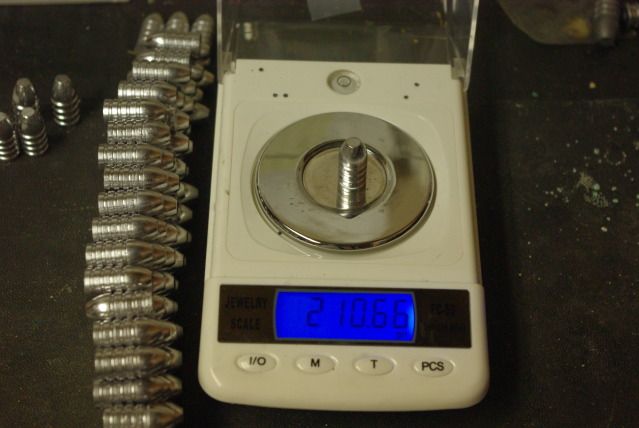Can I reverse that order? LOL!
OK, first of all, even if it doesn't make any difference down range, I consider casting and shooting to be two separate disciplines loosely connected at the hip. A person can be quite good at one and suck muddy rocks at the other.
That said, the only factors we have to judge our proficiency at the pot are:
Alloy
Weight
Appearance
Hardness/malleability
And ultimately, downrange accuracy.
The alloy is determined up front, or by laser XRF if you're lucky and really becomes the rose colored glasses through which you view each batch of boolits. The hardness can be tested but usually damages the boolit in some way (neither here nor there, smoke if ya got em). Obviously, shooting them is kind of final, no do-overs, no erasies, and you have rather decided to change sports there.
All that's left is weight and appearance.
All I did, was observe that the boolits produce a graph of proficiency if you will, and help you to see what is working for a particular mold.
I'm a bit of an accuracy junky anyway. I really really care about the things I make being superbly accurate, and it always bugged me that I couldn't see the subtle effect a certain change in procedure would have on my casting.
Neither here nor there.
All I am saying is that if you want to know how accurate you are with your particular casting technique, mold, alloy, cadence, and mental constitution, you can visually measure that by ordering them by weight on a piece of paper.
It does take some time, but the effect is fascinating!
Last night I had to try it again.
In this test, I ran the pot back at 700*, preheated the mold, threw out the first eight drops, and ran the spout for two full seconds before sweeping the mold under the stream and filling it.
The results were dramatic!
http://i1120.photobucket.com/albums/...ps2bc3015e.jpg (sorry, I can't post a picture for some reason).
I still have some variances, but I'm almost certain that came from the times I put the built up lead in the ladle back into the pot. This cooled the melt, which in turn made the mold run slightly cooler. I wish I could afford a 40lb magma pot, but that just isn't in the cards right now.
But dang! I'm scaring the hell out of it with my Lee 20 pounder eh? LOL!




















 Reply With Quote
Reply With Quote




















